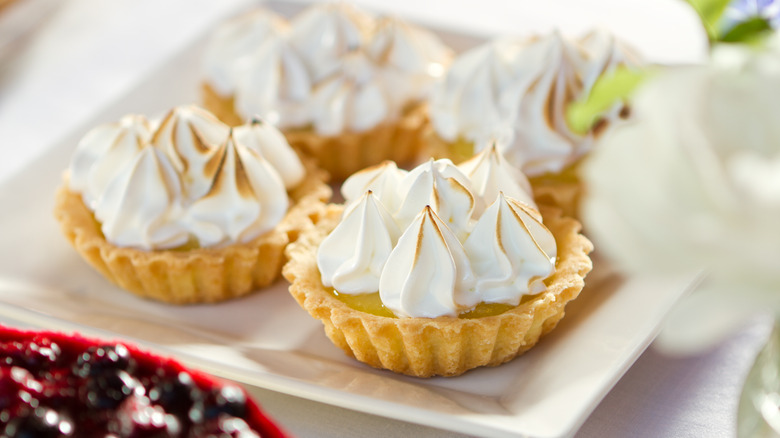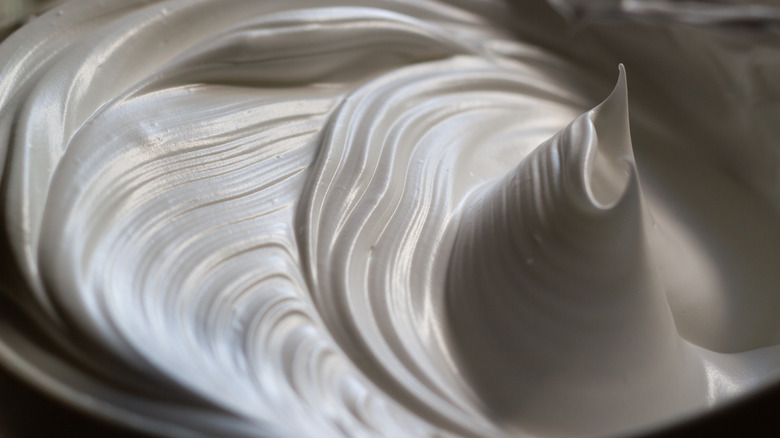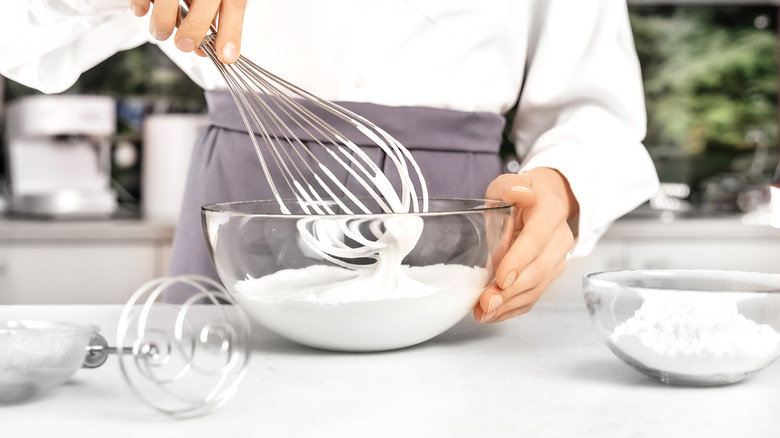What 'Stiff Peaks' Means When Beating Egg Whites
If someone is baking and has to beat egg whites to make a delicious French meringue to top a tasty tart, classic ladyfinger cookies, or any other number of yummy desserts, they've likely noticed that many recipes mention whipping egg whites to stiff peaks. But for those who have never whipped egg whites before, it can be difficult to figure out exactly what a "stiff peak" is. Also, what is the difference between soft, firm, and stiff peaks? And does really it matter?
Well, the answer is yes — it does indeed matter. In fact, even though the difference between soft, firm, and stiff peaks can seem quite small, it can make or break a recipe. So, it is important to understand what soft and stiff peaks look like. But firstly, what do they even mean by peaks?
When a recipe refers to "peaks" in whipped egg whites what they mean is that the egg whites have enough air in them to form little mountains (or peaks) of fluffy batter when it's time to pull up the stand mixer and remove the whisk attachment from the bowl. The foamy peaks can be seen both in the bowl (in the spot where the whisk was removed) and on the end of the whisk when turned upside down.
How to tell when stiff peaks have been achieved
Once someone understands what "peaks" should look like, it's time to become acquainted with the difference between soft, firm, and stiff peaks.
When whipping egg whites in a stand mixer, after a few minutes, once the mixture becomes white and airy, remove the whisk attachment and flip it upside down to see what type of peaks have been achieved. A soft peak will curve and fold over at the top like a Santa Claus hat. Soft peaks will also not stay standing for very long, and will start to deflate after only a few seconds — unlike firm and stiff peaks, which hold their shape.
After soft peaks, the next step is firm. They stand up almost straight, with a small curve at the top (like the sorting hat from Harry Potter). The last and final step of mixing egg whites is stiff peaks, which have no — or barely any — fold at the top and will stand straight and pointy, like a Hershey's Kiss or Mount Everest.
How to get stiff peaks in the stand mixer or by hand
Most people like to whip egg whites in a stand mixer, because it is more controlled and easier. To use the stand mixer to get stiff peaked egg whites, first separate the egg whites from the yolks and add a pinch of cream of tartar to help prevent overwhipped eggs; ⅛ teaspoon of cream of tartar per egg should do the trick.
Next, lower the mixer into the egg whites and start whipping on low, slowly increasing to medium speed. After about two minutes of mixing, check to see if the peaks are soft. If so, keep mixing for another few minutes, checking periodically to see which peak stage the egg whites have reached. In totality, it should take around four to five minutes to get stiff peaks. Once achieved, stop mixing immediately; more mixing could lead to over-beaten egg whites. If that's the case, try this fix to save the day.
No electric mixer? Egg whites can also be beaten by hand, but it will take longer. The time required will differ from person to person, depending on strength and mixing speed; some baking sites estimate around 13 minutes of vigorous whisking. But hey, who needs a gym membership when such a good arm workout comes along with whipping eggs by hand?


